Last month I had the privilege of collaborating with Trinidadian artist A k u z u r u, as part of the island’s annual COCO Dance Festival. Together, we dove into the question of what The Colour of Transformation means in the Caribbean, taking as our starting point the testimonials of seven women interviewed in the original UK-based film of the same title.
The film was first screened during Black History Month 2022. In collaboration with the global charity Butterfly Conservation, I led this project to shine a light on the work of UK-based Global Majority pioneers in conservation, natural history and the outdoors.
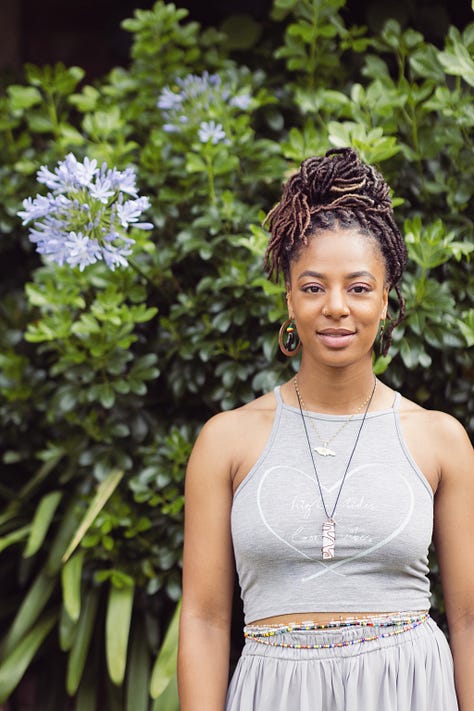
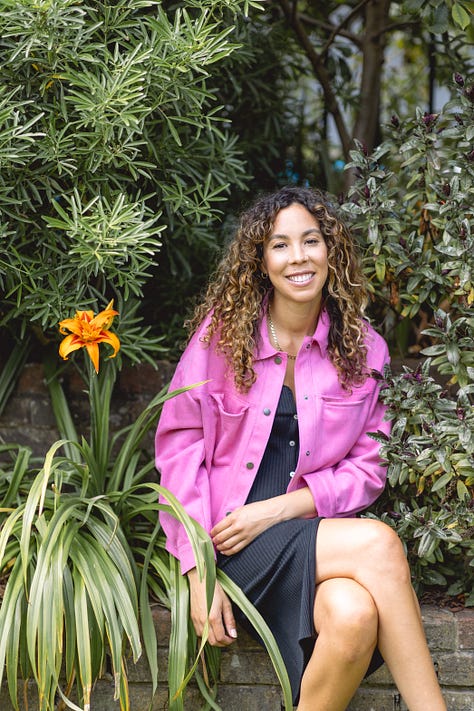

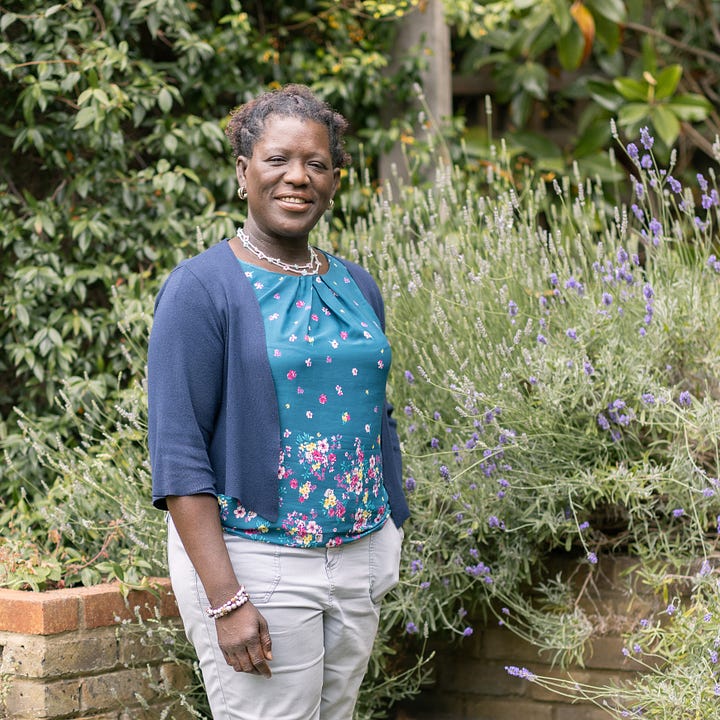
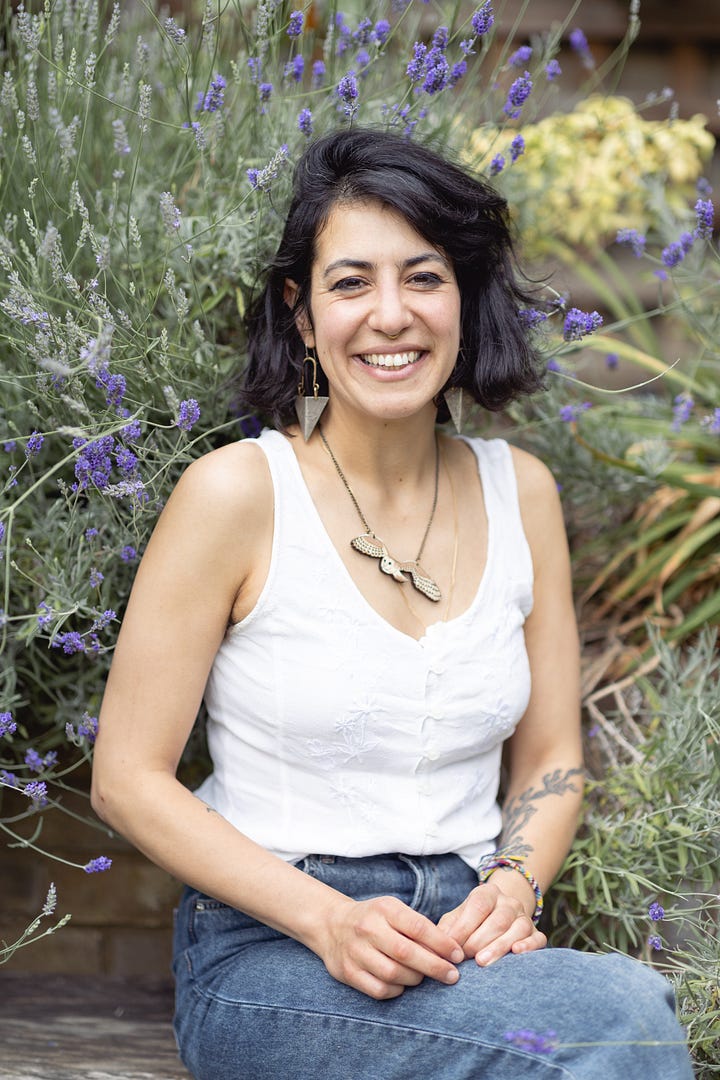
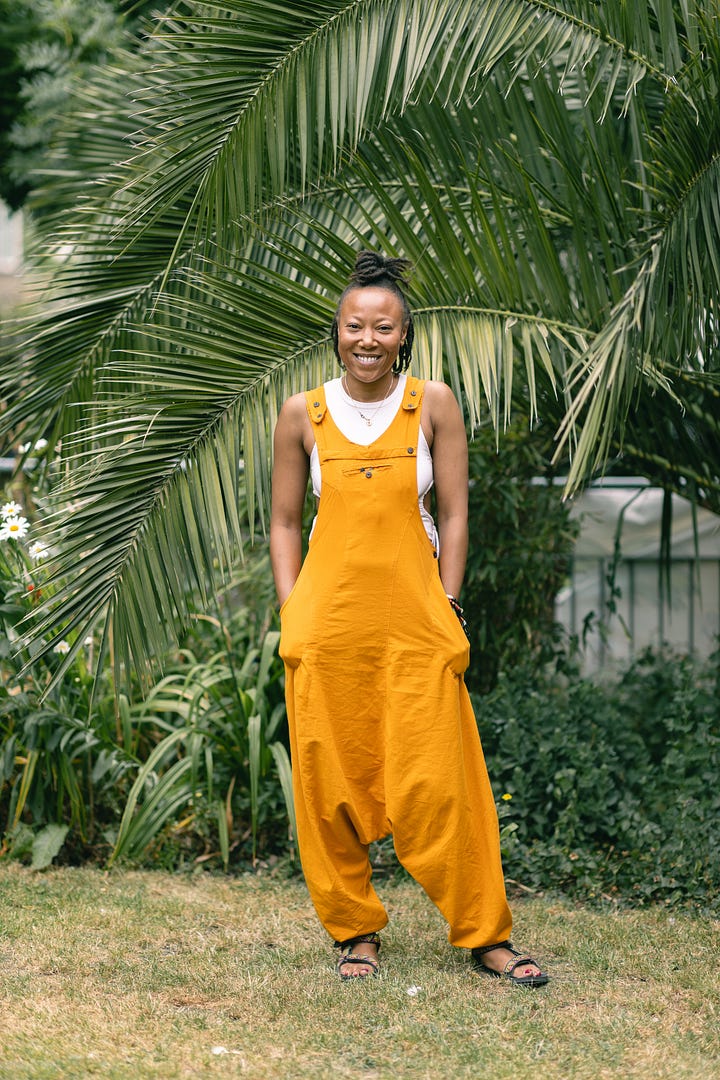
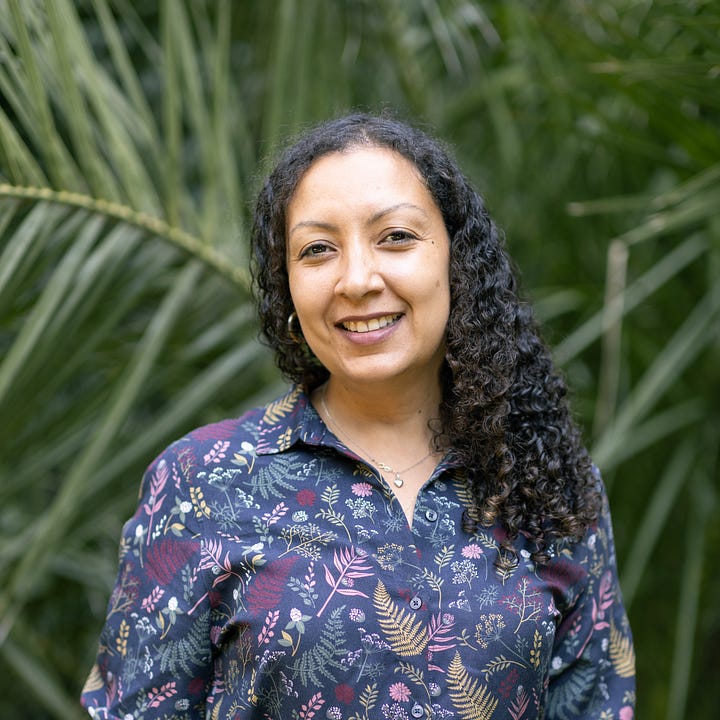
Working with the metaphor of the butterfly lifecycle, the film highlighted the challenges faced by Black and people of colour who are passionate about the natural world yet largely marginalised from important conversations about how we tackle the nature crisis we face as a collective. By focusing in particular on the mysterious interior world of the cocoon, the project sought to express the pressures and pleasures of self-determination and transformation, and the wider impact of this work. Each interview invited women change-makers to share their unique emotional and sensory experiences of creating space for more diverse narratives in the nature sector, redefining what it means to belong in nature and inviting new community groups into conversations typically dominated by euro-patriarchal world views. The women responded to my invitation with eloquence, vulnerability and humour and in turn, myself and a team of dancers, musicians and costume designers created an artist’s film response. You can read more about the original project here.
Circular Culture
A year later, I was invited to travel to Trinidad by performer and writer Sonja Dumas. In 2009, Sonja co-founded the annual COCO Dance Festival in 2009 along with fellow dance practitioners Nicole Wesley, Nancy Herrera and Dave Williams. Supported by the British Council’s Circular Culture Programme, which recognises the role of culture as a facilitator and agent of change for sustainable development, we shared ideas and approaches sparked by the central messages of The Colour of Transformation project. This manifested as a panel discussion with environmental activists (more on this in my next post) and a cross-cultural exchange with artist A k u z u r u, who devised a performance to be shown at Trinidad’s National Academy for the Performing Arts (NAPA).
Working with A k u z u r u was an inspiring experience. She is a transdisciplinary artist and shamanic performer who creates complex spatial and performance-based works that command the audience’s gaze; the depth to which she engages with the natural world, seen and unseen, is unlike any artist I have met thus far. Like me, A k u z u r u is fascinated by the cocoon as a metaphor for rebirth; in 2016 she produced Opus Chrysalis, a performance focused on the traumas and the possibility of a new dawn in human existence through a multi-componential engagement with the ether within the Swiss mountains. During our time working together atop Trinidadian mountains, we explored the fundamental question behind The Colour of Transformation - how can human consciousness evolve so as to meet the urgent needs of the natural world? - and through masquerade and movement developed an embodied call to amplify Global Majority women’s voices within environmental conversations.
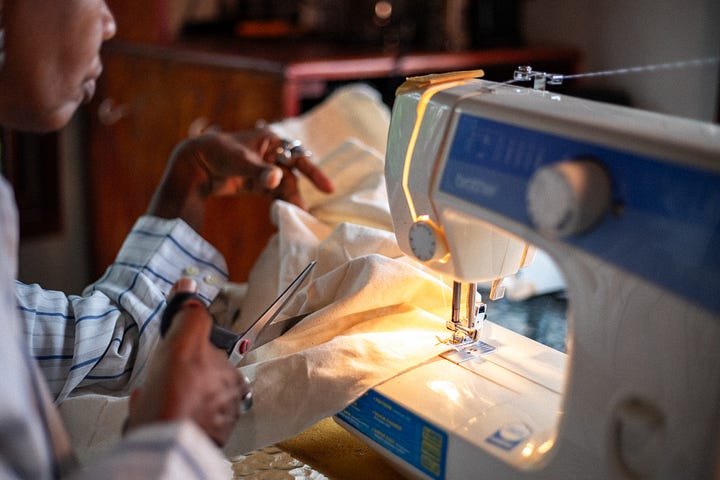
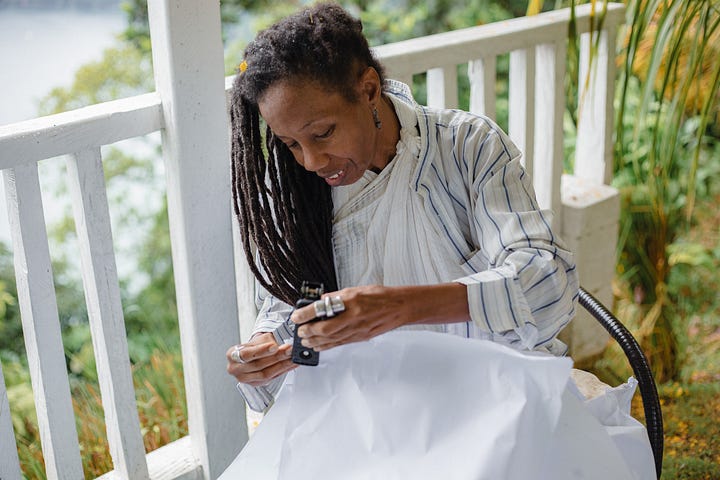
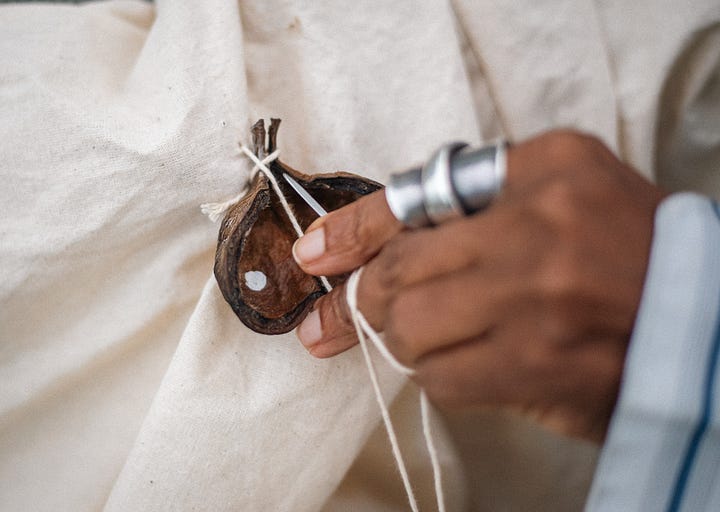
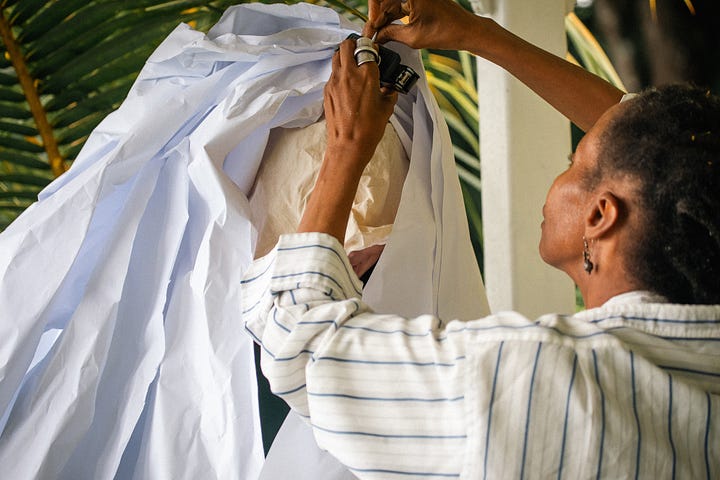
Alkhemy Of Sound ((((((Plant ing DIRT(((((((
Inspired by the film’s interviewees, A k u z u r u developed the concept for a performance in honour of the Haitian priestess Mambo, who offers healing and guidance as part of African diasporic religious ceremonies. Mambo’s presence emerged for A k u z u r u while meditating on the The Colour of Transformation as a representation of the collective female voice. The resulting performance, Alkhemy Of Sound ((((((Plant ing DIRT(((((((, extended this experience into the public realm through masquerade, music and movement; costumes were made out of raw calico, bamboo, paper, mahogany leaves and seeds, royal palm fronds and stalks, and part of the original film’s cocoon-inspired costume designed by Ingrid Hu was integrated into the masquerade.
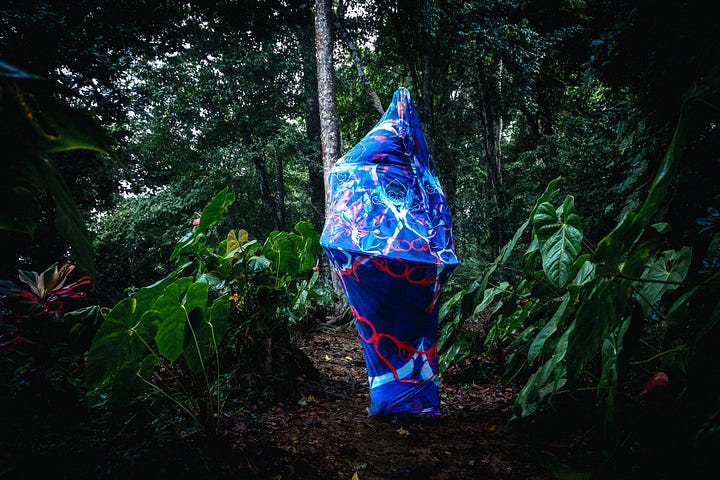

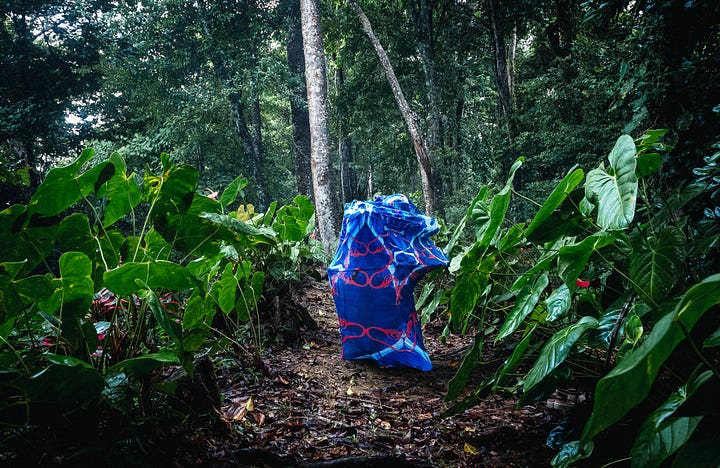
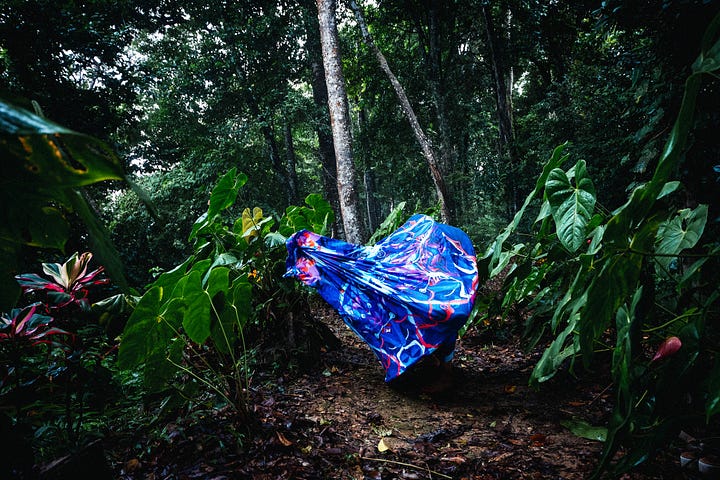
In the final performance, as A k u z u r u moved across the building’s frontage, overlaying a musical score created by Bumi Thomas and Orphy Robinson MBE with guttural sounds and melodic chants, she ritualistically opened the space with bells, knives and soil. Behind her, wearing a sister-masquerade, uncanny in its long, bulbous, hooded form, I co-performed by preparing the space for the Alkhemy of Sound ceremony with twine, flags and wild drawings across the steps of NAPA. (If you would like to find out about my wild drawing practice, follow this link here).
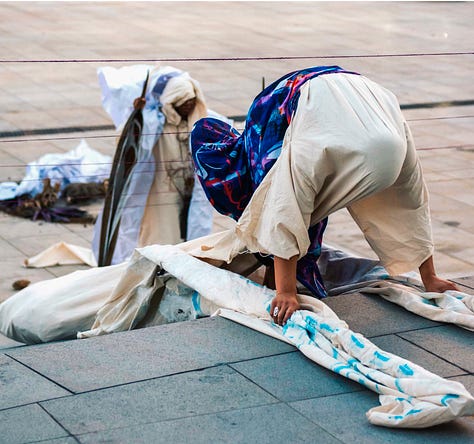
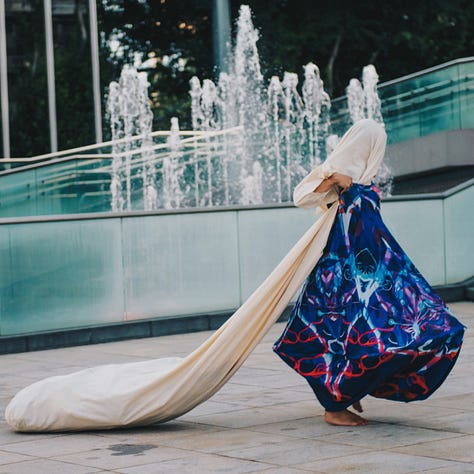
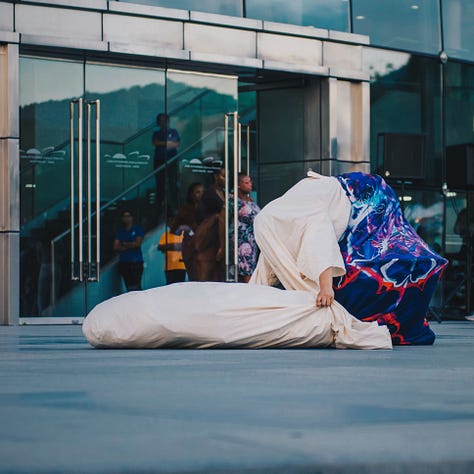
For me personally this was a primal, meditative experience to co-perform Alkhemy Of Sound with A k u z u r u. Our collaboration, alongside audience responses to screenings of the UK film and the aforementioned panel discussions, has helped to catalyse new ways of thinking about The Colour of Transformation as a global project for me now. I’m looking forward to sharing these in due course…

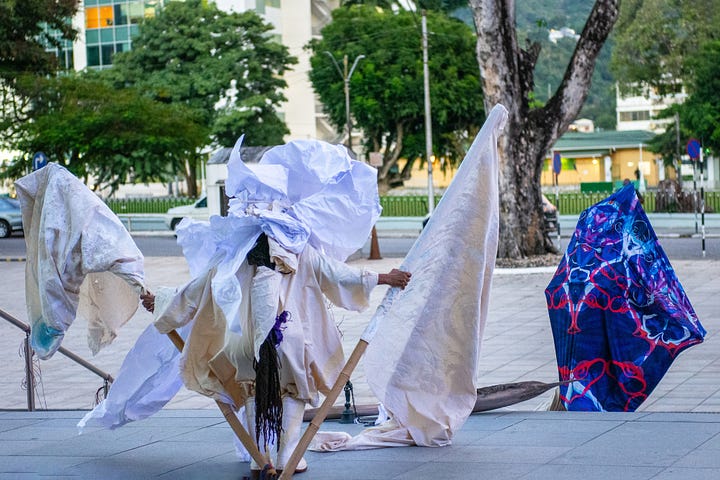
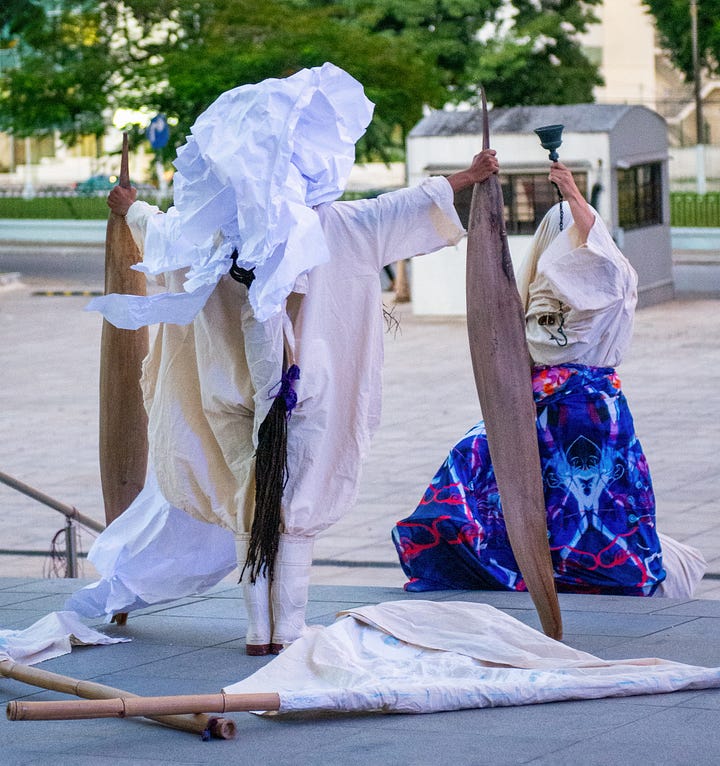
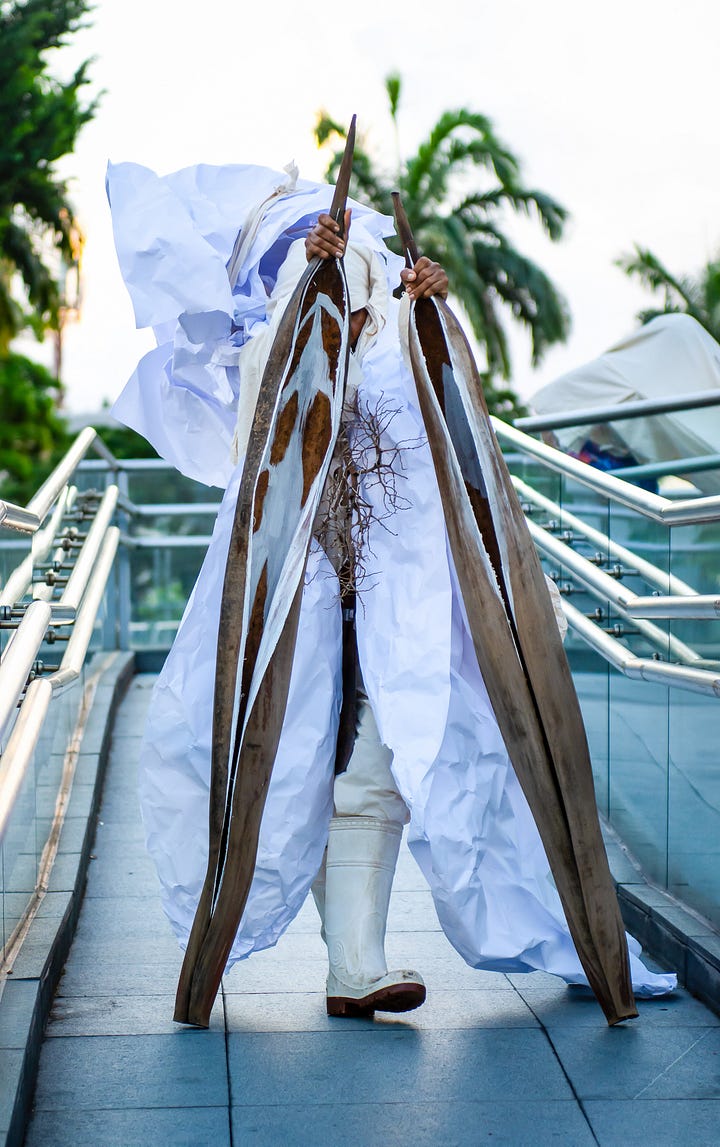
For our audiences watching at dusk as the full moon rose over the Academy, Alkhemy Of Sound was a curious offering of different cosmologies from across the Global Majority, which re-positioned Black women and women of colour as potent agents for change within and on behalf of the natural environment through a Caribbean-specific lens.
Amongst the festival crowd’s response, one man’s reflection in particular stood out that I thought I would share, largely because he hadn’t planned to visit the evening’s COCO Dance Festival and I love this aspect of public art - you never know who you might engage. He had been drawn in as he passed by with his shopping bags and stayed to the end, coming over to me afterwards to explain that the piece had been an unexpected interruption to his evening, keen to share what he had observed. “It was all about the collective energy wasn’t it? The power of energy. The beauty and expansion that is possible when we create with positive energy, the destruction when we stay in the negative. That’s what I took from it, anyway.” And, ultimately, he was pretty much spot on.
Thank you to Brendan Delzin for capturing the creative process, and Karen Johnstone and Dave Williams for capturing the performance.










